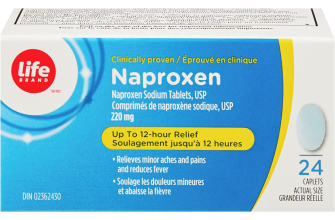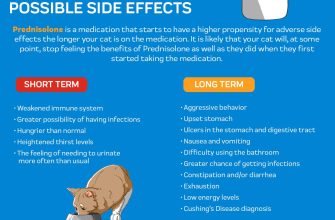For adults treating Lyme disease, the standard doxycycline dosage is 100mg twice daily. This regimen typically continues for 14 to 21 days, depending on your physician’s assessment of your individual case and response to treatment. Always follow your doctor’s instructions meticulously.
Children, however, require a different dosage. The recommended dose varies with weight and age. Your pediatrician will determine the appropriate amount for your child based on these factors. Never administer adult dosages to children; this is vital for safety and treatment efficacy.
Remember, this information serves as a general guideline only. Never self-medicate. A proper diagnosis from a qualified medical professional is paramount. They will tailor the treatment plan to your specific situation, considering factors like the severity of the infection, your medical history, and potential drug interactions. This individualized approach is critical for optimal results and minimizing potential side effects.
Consult your doctor or other qualified healthcare provider immediately if you experience any adverse reactions while taking doxycycline. Common side effects can include nausea, vomiting, diarrhea, and photosensitivity. Prompt attention to any unusual symptoms is crucial for your well-being.
- Doxycycline Lyme Dosage: A Comprehensive Guide
- Standard Doxycycline Dosage for Lyme Disease
- Duration of Doxycycline Treatment for Lyme Disease
- Doxycycline Dosage Adjustments for Specific Patient Populations
- Children
- Older Adults
- Renal Impairment
- Hepatic Impairment
- Patients Taking Other Medications
- Note: This information is for general knowledge and does not constitute medical advice. Always consult your physician or other qualified healthcare professional for diagnosis and treatment of Lyme disease and for personalized dosage recommendations. They will consider your individual health status and other factors when determining the best course of treatment.
- Potential Side Effects of Doxycycline and Management Strategies
- Gastrointestinal Issues
- Sun Sensitivity
- Yeast Infections
- Other Possible Side Effects
- Managing Side Effects
- Serious Side Effects (Seek Immediate Medical Attention)
- When to Consult a Doctor Regarding Doxycycline Treatment for Lyme Disease
- Signs of Treatment Failure
- Concerning Side Effects
- Medication Interactions
Doxycycline Lyme Dosage: A Comprehensive Guide
Standard treatment for Lyme disease in adults involves 200 mg of doxycycline taken once daily for 14 to 21 days. Children’s dosages differ and are determined by weight. Always follow your doctor’s instructions; self-treating can be dangerous.
For children weighing less than 45kg, the usual dose is 4mg/kg per day, divided into two administrations. For example, a 25kg child would receive 100mg per day in two divided doses.
Doxycycline’s effectiveness depends on several factors, including the duration of infection and the patient’s overall health. Early diagnosis and prompt treatment significantly improve the chances of a full recovery.
Potential side effects include nausea, vomiting, diarrhea, and photosensitivity. Inform your doctor immediately if you experience any severe side effects or allergic reactions.
Complete the entire prescribed course of medication, even if symptoms improve. Stopping early can lead to relapse or antibiotic resistance.
Regular follow-up appointments with your doctor are crucial to monitor treatment progress and detect any complications. Blood tests may be used to track the effectiveness of the treatment.
This information is for general knowledge and should not be considered medical advice. Always consult a medical professional for diagnosis and treatment of Lyme disease. They will determine the appropriate dosage and duration of treatment based on individual circumstances.
Standard Doxycycline Dosage for Lyme Disease
The typical adult dosage is 100mg twice daily for 14 to 21 days. Children’s dosage varies by weight and age; always consult your doctor for precise instructions.
Important Note: This is a general guideline. Your doctor will determine the appropriate dosage based on your individual circumstances, including your age, weight, overall health, and the severity of your infection. They may adjust the dosage or duration of treatment.
Do not alter your dosage without your doctor’s explicit approval. Accurate adherence to the prescribed regimen is key to successful treatment.
Potential side effects include nausea, vomiting, diarrhea, and photosensitivity. Report any concerning symptoms to your physician immediately. Regular follow-up appointments are vital to monitor treatment progress and ensure the infection is eradicated.
This information is for guidance only and does not replace a consultation with a healthcare professional. Always seek medical advice for diagnosis and treatment.
Duration of Doxycycline Treatment for Lyme Disease
The standard treatment course for Lyme disease with doxycycline is 14 to 21 days. This duration is generally sufficient to eradicate the Borrelia burgdorferi bacteria, the causative agent of Lyme disease.
However, treatment duration can vary depending on several factors. Early diagnosis and prompt treatment significantly influence the outcome and may shorten the necessary treatment period. Conversely, more severe or disseminated cases might require a longer course, potentially up to 28 days. Your doctor will carefully consider your individual circumstances.
Here’s a table summarizing potential treatment durations based on disease severity:
| Disease Severity | Doxycycline Treatment Duration (Days) |
|---|---|
| Early localized Lyme disease | 14-21 |
| Disseminated Lyme disease (early) | 21-28 |
| Late-stage Lyme disease with neurological or cardiac involvement | Consult your physician; individualized treatment plans are common |
Always follow your doctor’s instructions meticulously. They will monitor your progress and adjust the treatment plan as needed. Never alter your prescribed dosage or duration without consulting them. Complete the entire course of antibiotics, even if you feel better before finishing, to prevent recurrence and ensure complete eradication of the infection.
Doxycycline Dosage Adjustments for Specific Patient Populations
Pregnancy and Breastfeeding: Doxycycline is generally avoided during pregnancy due to potential fetal harm. Alternatives are preferred. If absolutely necessary, carefully weigh risks and benefits with your doctor. Breastfeeding mothers should also discuss risks with their physician; low levels may be present in breast milk.
Children
Doxycycline is typically not recommended for children under eight years old due to potential tooth discoloration. For Lyme disease in children, alternative antibiotics are usually prescribed.
Older Adults
Older adults may require dose adjustments due to potential kidney or liver impairment. Reduced doses are often necessary to prevent side effects. Your doctor will consider your kidney and liver function tests when determining the appropriate dosage.
Renal Impairment
Dosage reduction is frequently necessary for patients with kidney problems. The specific adjustment depends on the severity of renal impairment, usually guided by creatinine clearance values. Your doctor will adjust your dose based on your individual lab results.
Hepatic Impairment
Patients with liver disease may also need lower doses of doxycycline. Your physician will monitor your liver function and adjust the medication as needed, considering the severity of your liver condition.
Patients Taking Other Medications
Doxycycline can interact with certain medications. Always inform your doctor of all medications you are taking, including over-the-counter drugs and supplements. This allows for appropriate dosage adjustments and minimizes potential adverse interactions.
Note: This information is for general knowledge and does not constitute medical advice. Always consult your physician or other qualified healthcare professional for diagnosis and treatment of Lyme disease and for personalized dosage recommendations. They will consider your individual health status and other factors when determining the best course of treatment.
Potential Side Effects of Doxycycline and Management Strategies
Doxycycline, while effective against Lyme disease, can cause side effects. These are usually mild and temporary, but knowing what to expect helps manage them.
Gastrointestinal Issues
Upset stomach, nausea, diarrhea, and vomiting are common. To minimize these, take doxycycline with food or milk. If symptoms are severe, consult your doctor; they might adjust the dosage or recommend an anti-nausea medication.
Sun Sensitivity
Doxycycline increases your sensitivity to sunlight. Use sunscreen with an SPF of 30 or higher, wear protective clothing (wide-brimmed hats, long sleeves), and limit sun exposure, especially during peak hours (10 a.m. to 4 p.m.).
Yeast Infections
Doxycycline can disrupt the balance of your gut flora, potentially leading to yeast infections (oral thrush or vaginal yeast infections). If you notice any signs – such as white patches in your mouth or vaginal itching – contact your doctor promptly for treatment.
Other Possible Side Effects
- Headache
- Dizziness
- Photosensitivity
- Esophageal irritation (avoid lying down immediately after taking the medication)
Managing Side Effects
- Hydration: Drink plenty of fluids to help prevent dehydration, especially if you experience diarrhea.
- Dietary Adjustments: Eat bland foods if you have nausea or vomiting. Avoid alcohol and caffeine, which can worsen gastrointestinal issues.
- Medication Timing: Take doxycycline with food to reduce stomach upset.
- Communication: Report any concerning side effects to your doctor. They can provide guidance and potentially adjust your treatment plan.
Serious Side Effects (Seek Immediate Medical Attention)
Although rare, some serious side effects require immediate medical attention. These include difficulty breathing, swelling of the face, lips, tongue, or throat (angioedema), severe allergic reactions, and unusual bruising or bleeding.
When to Consult a Doctor Regarding Doxycycline Treatment for Lyme Disease
Contact your doctor immediately if you experience any allergic reaction, such as hives, swelling, or difficulty breathing. This requires prompt medical attention.
Signs of Treatment Failure
Seek immediate medical advice if your Lyme disease symptoms don’t improve or worsen after starting doxycycline. This includes persistent fever, worsening joint pain, new rashes, or neurological symptoms like facial palsy or severe headaches. These might indicate the need for alternative antibiotics or further investigation.
Concerning Side Effects
Report any significant side effects to your doctor. These may include severe nausea, vomiting, diarrhea, or unusual bruising or bleeding. Monitor yourself carefully for these issues. Early intervention is key to managing potential complications. A change in antibiotic might be necessary.
Medication Interactions
Inform your doctor about all medications, supplements, and herbal remedies you’re taking. Doxycycline can interact with other drugs, potentially leading to harmful effects. This proactive communication helps prevent adverse reactions.







